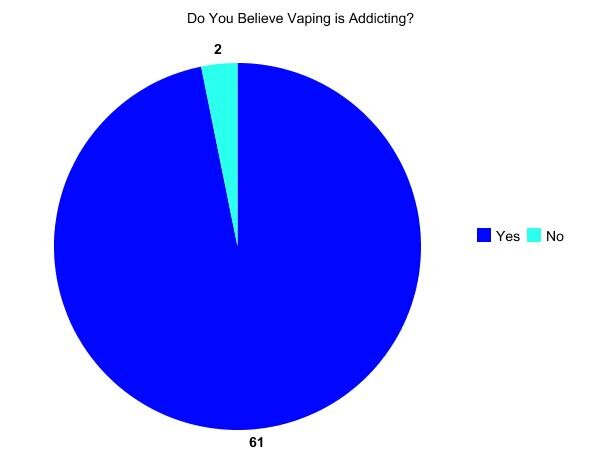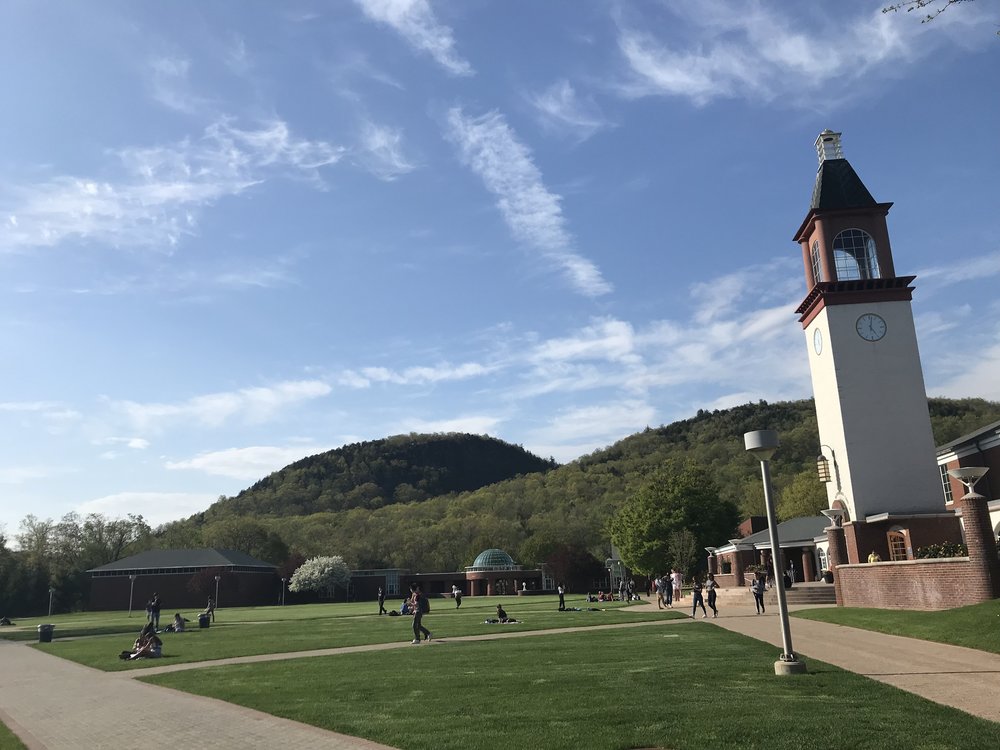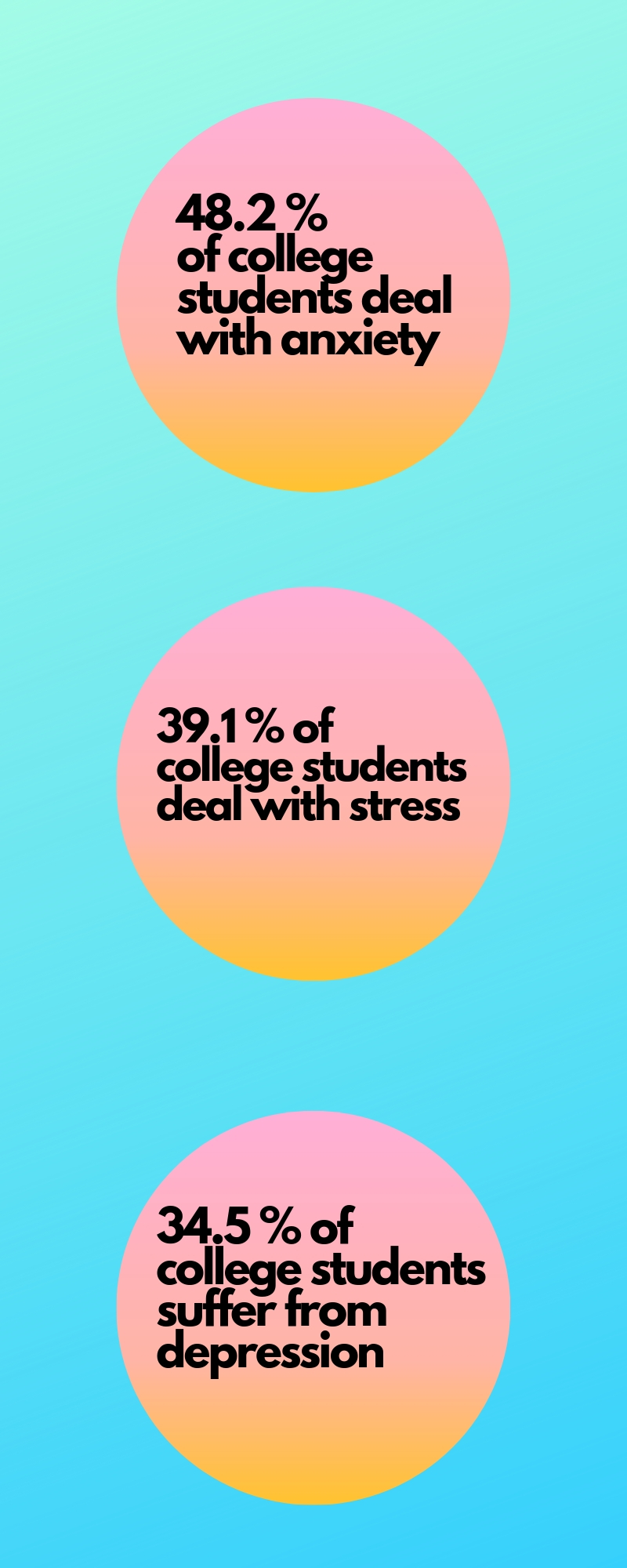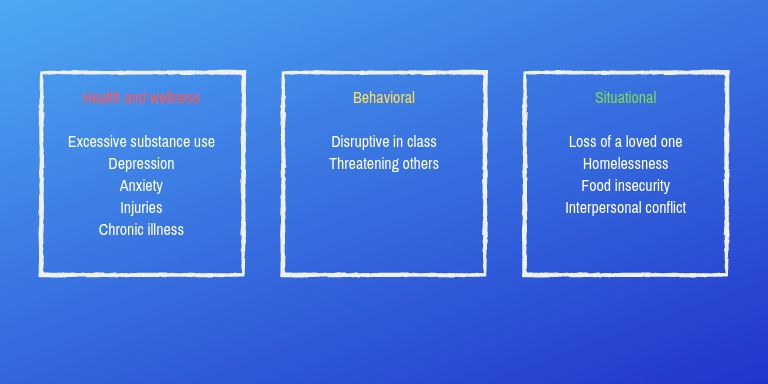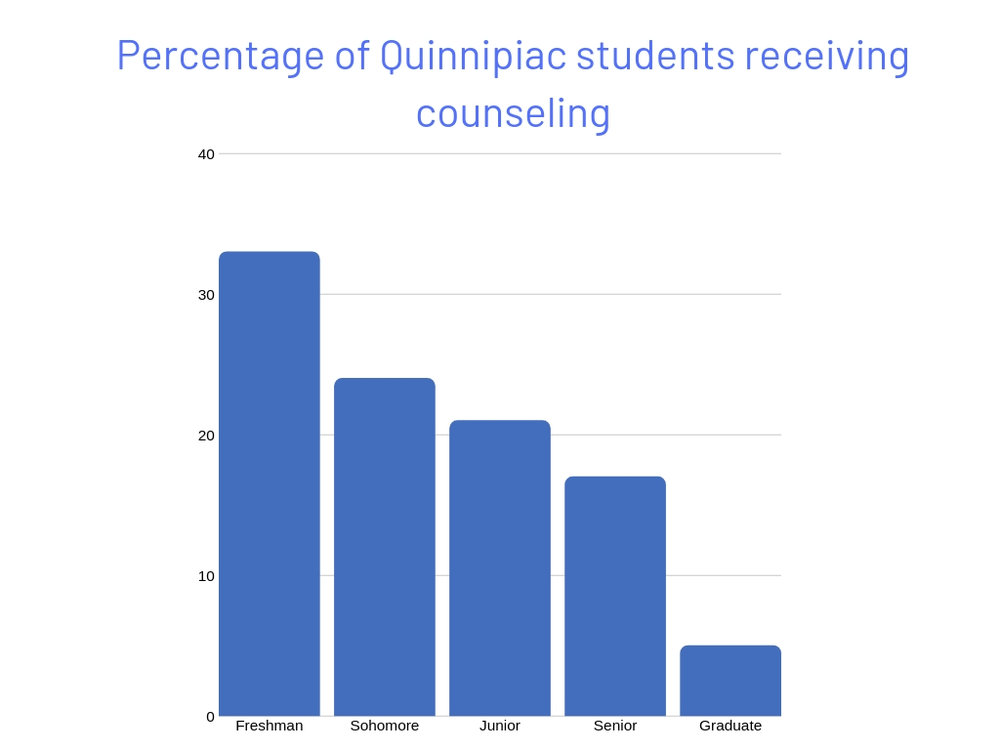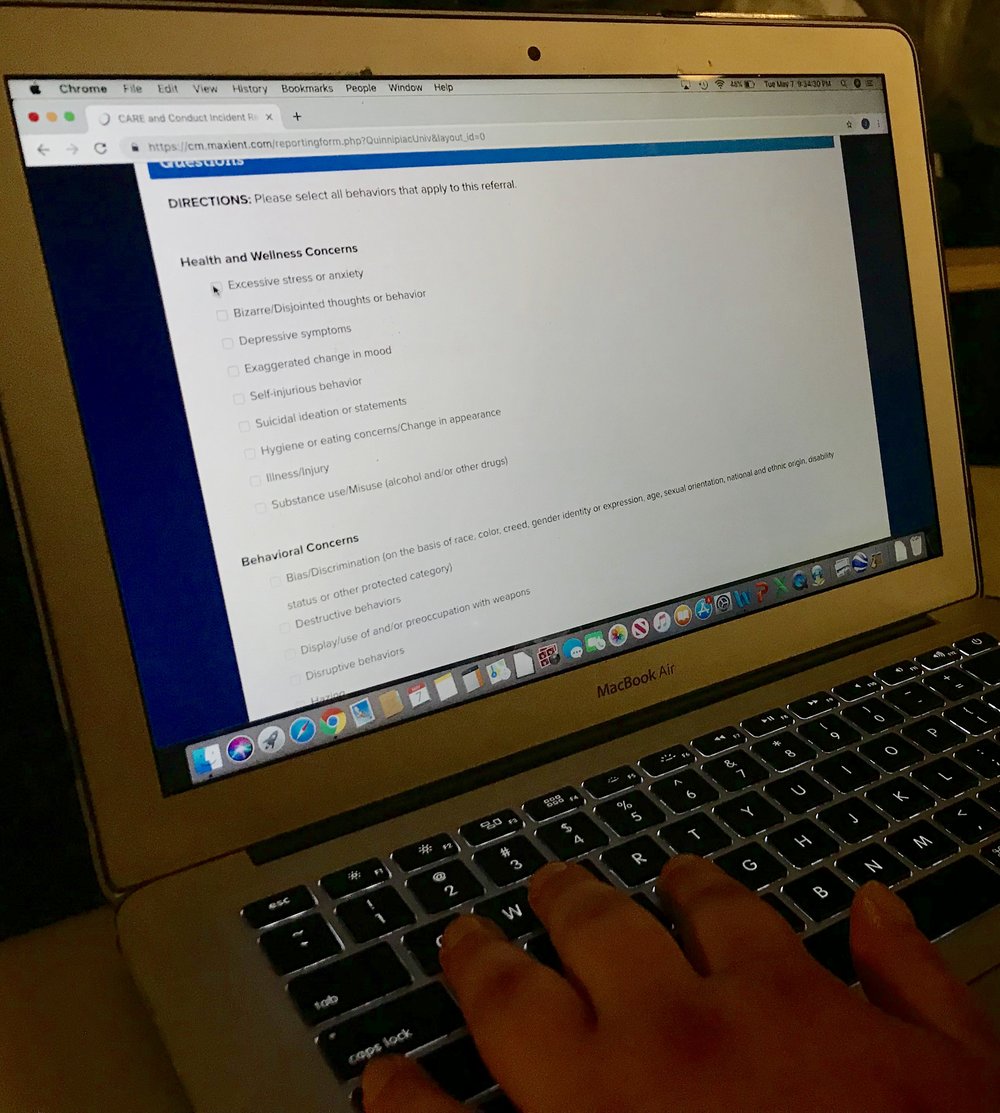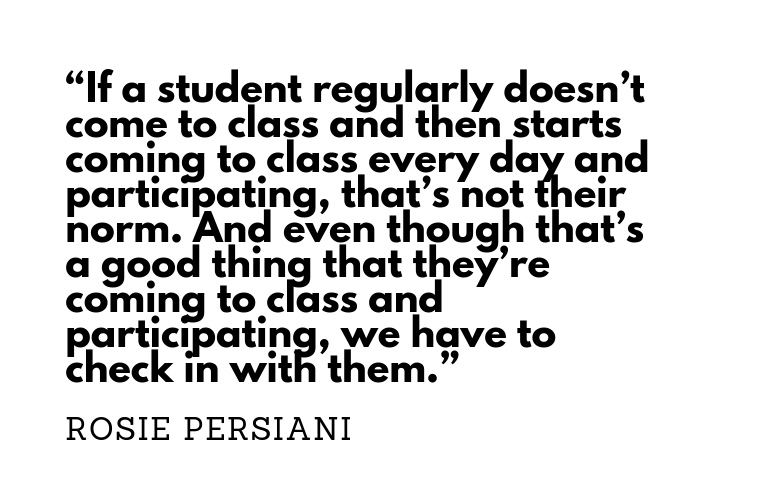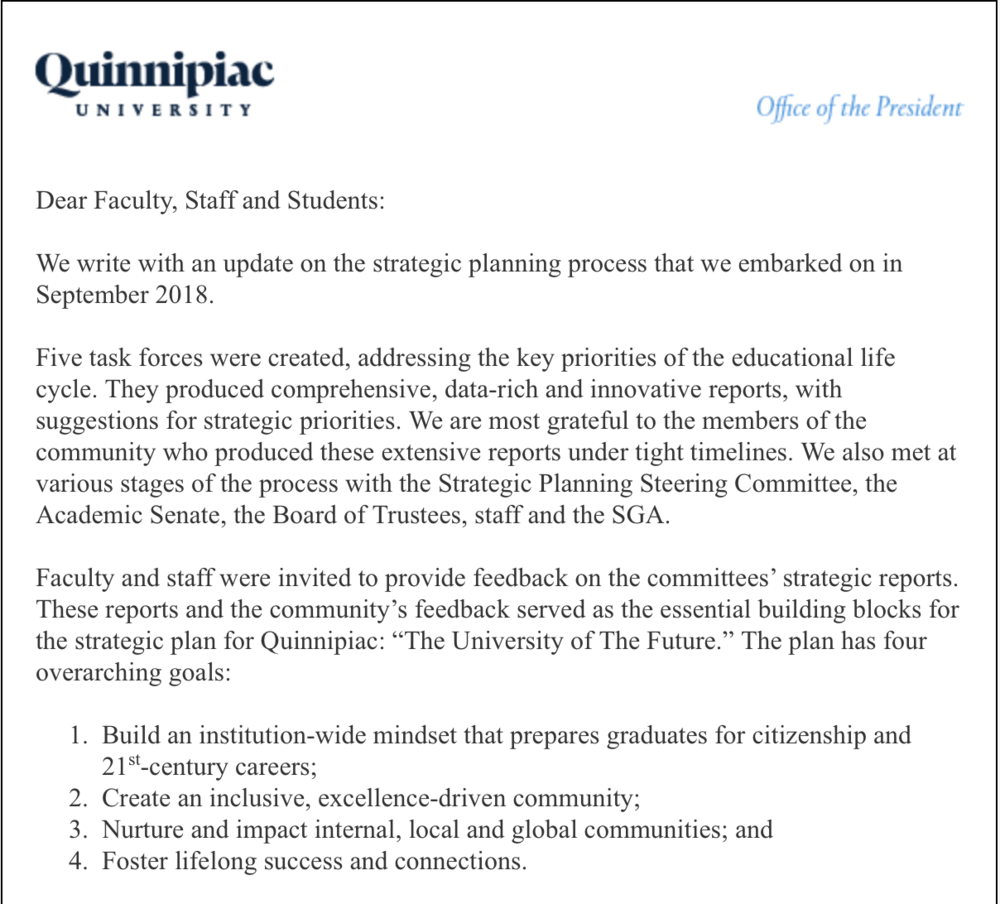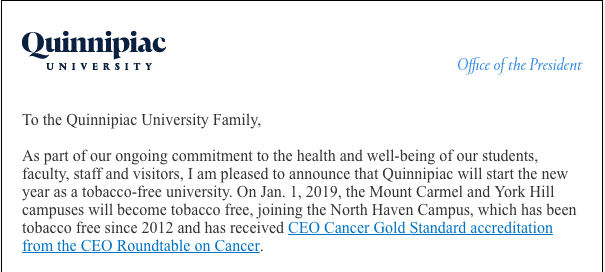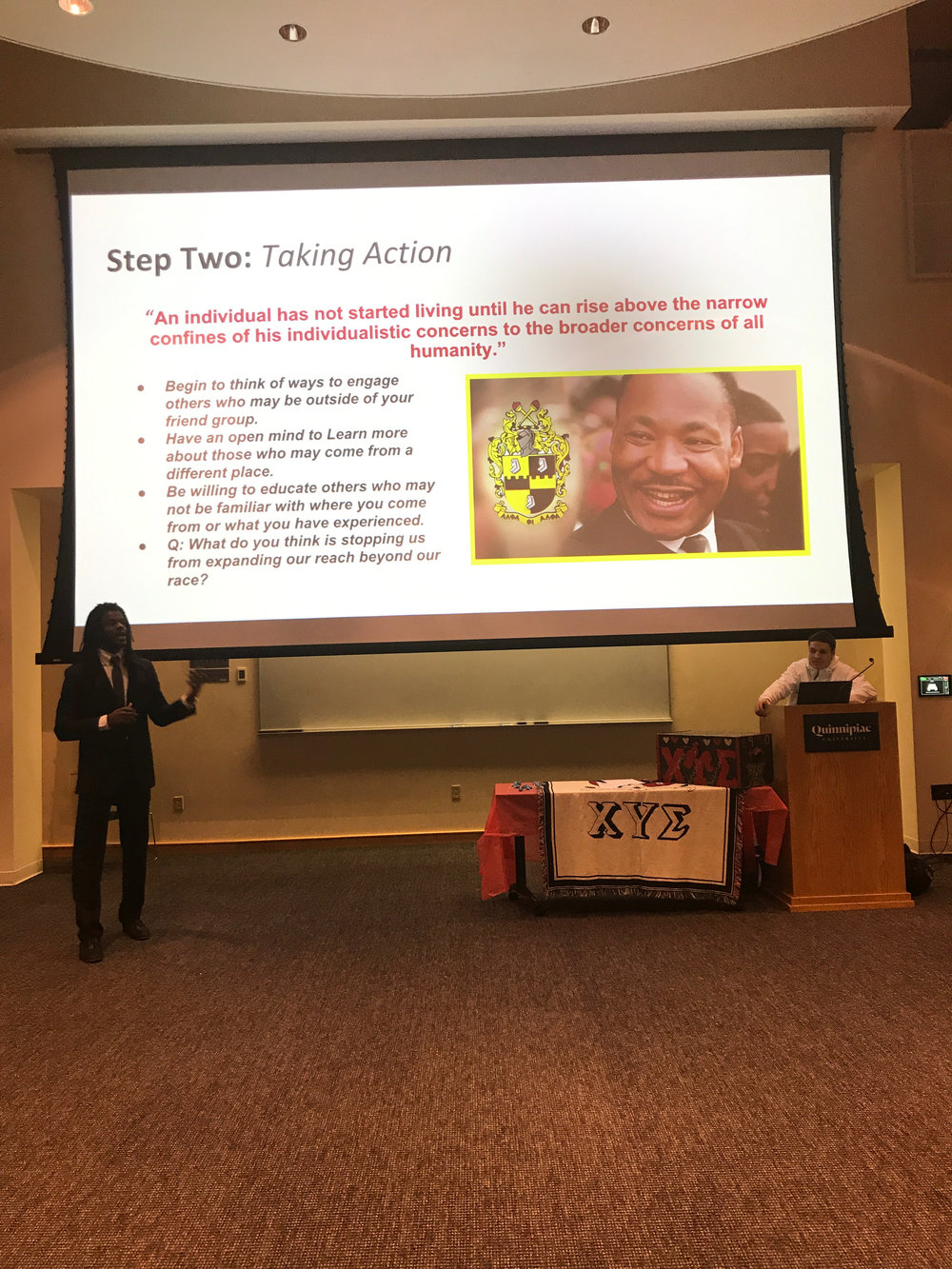By Bryan Schwartz
Imagine a LinkedIn-style site for college athletes who want to attend a new school. Aaron Falzon experienced the real thing.
“I put my name in,” said Falzon, who now attends Quinnipiac University in Hamden, Conn. “I went to go write my 20-page paper. 30 minutes later I had four emails, two texts and five missed calls, and I was like, what is going on?”

Aaron Falzon warms up for his first home game at Quinnipiac against Albany. (Photo by Liz Flynn)
Welcome to the NCAA Transfer Portal, where the students can enter their name into a system that serves as a gateway to the vast reservoir of colleges seeking top athletic talent.
The NCAA opened the portal Oct. 15, 2018, to give students the opportunity to change schools without the hassle of sitting out a year per long-standing transfer rules.
The portal gives athletes a chance to seek opportunities – the role of college in general. But it has turned into something much, much more, even for mid-major Division I schools such as Quinnipiac.
Quinnipiac men’s basketball head coach Baker Dunleavy has recruited five transfer students, including one through the portal in Falzon. The portal is a profound development for the school.
“The wave of transfers isn’t going anywhere,” Dunleavy said. “It’ll only get bigger. It’ll only get more popular. I think player movement and freedom is something that continues to grow.”
The Good
The Bobcats took advantage of the portal to land Falzon, who previously attended Northwestern, a Big Ten school. Dunleavy found him on the portal and sent one of those emails that overwhelmed the Massachusetts-born player.
Why did Falzon leave a major school outside of Chicago to attend Quinnipiac in suburban Hamden, and play in the Metro Atlantic Athletic Conference with its one-bid status for the NCAA Tournament?
“I wanted to go to a place where I have an opportunity to play and have the chance to win a conference championship,” said Falzon of Newton, Mass. “Also, the bonus when I come here is being close to home. Mom and Dad can drive to every game.”
Dunleavy, in turn, saw Falzon as a player who fit the team’s culture.
“For us, we can be really opportunistic with transfers when they fit our culture and our identity and really being disciplined in knowing when that’s the case,” Dunleavy said. “With an Aaron Falzon, that was the case. We were really aggressive to recruit Aaron.”
The Bad
Jaden Daly, a sports writer for A Daly Dose of Hoops, has been covering New York-metro area men’s college basketball for 10 years. Daly has seen both sides of the story: the high-major schools bringing in players that out-matched their competition on the mid-major front and the mid-major schools taking advantage of this chance to recruit the nation’s top talents.
Between grad transfers ,players in the transfer portal and players that have entered their names in the draft teams will look very different come end of the summer. Roster management has become as important as any aspect of coaching for high major programs. @CollegeGameDay
— Seth Greenberg (@SethOnHoops) April 12, 2019
“The lower level schools are losing out because now it’s created a marketplace where if you are a higher major and you’re losing out in recruiting, it’s a ripple effect with the one-and-done’s. You have to go to the next best option,” Daly said.
That next option? Well, it’s plucking the best of the best from conferences like the MAAC. In the portal era so far, Quinnipiac has not been a team that has had to see players leave to other schools. However just three years ago the Bobcats were forced to wave goodbye to their two top scorers in Mikey Dixon and Peter Kiss. Dixon joined St. John’s in the Big East and Kiss is now playing at Rutgers in the Big 10.

Mikey Dixon (left) and Peter Kiss (right) pose together during their freshman year at Quinnipiac. (Photo by QBSN)
This has been the issue for mid-major teams in the last calendar year with the portal.
“If you’re a high major coach, you see a 15, 20 point per game scorer that goes into the portal,” Daly said, “why not take a shot at him? If you’re not able to get a one-and-done like a Kentucky or Carolina or Duke is going to get, you have to find some way to keep up with the Joneses.”
The Jury’s Still Out
On the other hand, mid-major schools need to compete with each other, and Quinnipiac’s program is no different: it needs to find talent flying just below the major-school radar. The transfer portal facilitates that effort.
Jessica Hegmann-Grasso, the MAAC’s associate commissioner said, the transfer portal gives these types of schools, especially in her conference, ways to get a hold of the players they would not be able to typically recruit out of high school.
“The transfer option does benefit the mid-major conferences, like ourselves. Being able to get access to those players that may go elsewhere and then come back to us,” Hegmann-Grasso said, “we do benefit from that.”

MAAC men’s basketball has gained 20 transfer student-athletes for the 2019-20 season, while losing 11 in the portal.
Hegmann-Grasso did point out that we are only in year two of the portal process. There is so much still to come.
“It has only been two years. It’s still new. Like anything else it takes that adjustment period to see how the full reaction will be from it. Right now it’s waiting and seeing.”
One thing that it has already accomplished is it has made it easier for the student-athletes to explore all of their options.
“The process to dealing with the transfers prior to the portal was a lot more restrictive, a lot more interaction and conversation,” Hegmann-Grasso said, “where the portal is now making it a little bit more free.”
Is it free enough? Not for ESPN’s Jay Bilas.
Now, Quinnerly will play as a 24-year old, redshirt senior. For what purpose? The NCAA’s transfer policy is an unholy, unjustifiable mess. If Quinnerly played softball or all but five other sports, he could transfer at semester and be immediately eligible. https://t.co/tju0iA1kGJ
— Jay Bilas (@JayBilas) November 12, 2019
The transfer portal has continued to progress this freedom that the student-athletes desire. Phillip Lamar Cunningham, a professor of media studies who formerly served as co-director of the sports studies program at Quinnipiac University said that the portal, itself, has legitimized the power that the student-athletes can have. Though, he does not believe it has had an outstanding impact on the landscape of college athletics.

Falzon stands with his teammates before his first home game with Quinnipiac.
“The transfer portal, like most NCAA initiatives, is a little late and doesn’t necessarily change much as much as it capitulates to the forces that they already had to give way to.”
Knowing that you have options is an important part of a young athlete’s mindset, and those are really on full display all the time now.
“For a small school like Quinnipiac, the benefits are if you’re an elite college athlete, you are coming home,” Cunningham said. “If you are someone that’s on the cusp of a major conference team but you can’t really break through, you can possibly come here [Quinnipiac] and be a star. We see this in every sport. If you are a star in a mid-major you are suddenly more attracted to more established teams.”
The new rules have led to confusion over the transfer portal’s role. For Hegmann-Grasso and her colleagues in the MAAC’s league offices, they just would like to see it play out a bit more.
“I think it’s just too early to start changing anything because it took a while to get to this point, and to just change it right away?” Hegmann-Grasso said. “I don’t think we do our due diligence of really setting up a system, even though some were in favor for it and some were not.”
It’s just the start of more and more changes in college basketball, and so far, Quinnipiac can call itself a beneficiary. So far.

